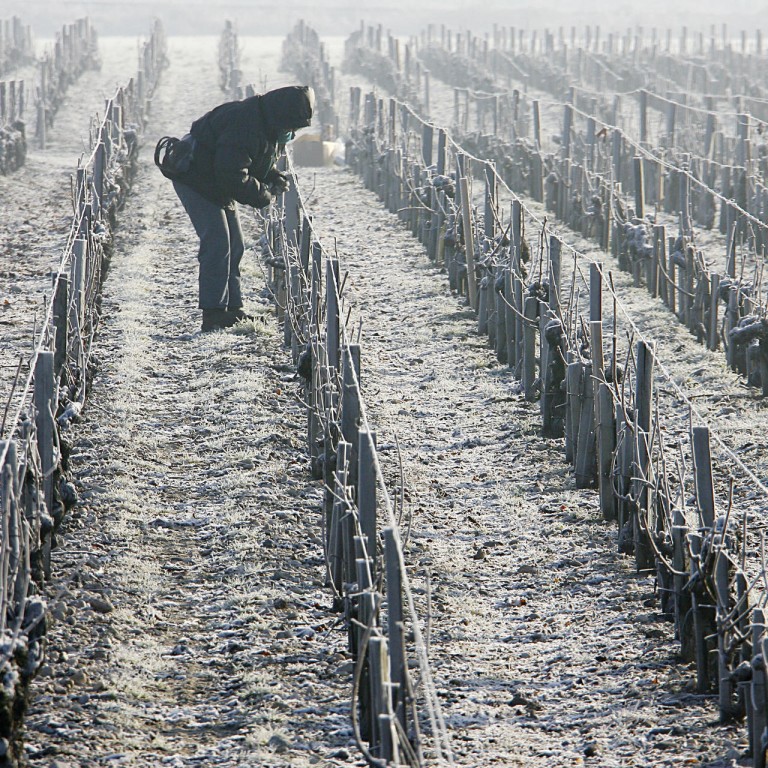
Wine opinion: winter in the vineyard
"In the summer, I'm usually working with a small team in the vineyards," says Olivier Tregoat, a terroir expert and vineyard consultant in Beziers in the south of France. "On a typical day, we'll be taking readings of the vines, and checking shoot growth, water stress, and all the other indicators of how good a growing season we are having."
Tregoat enjoys working in a team, but he also loves being out among the vines in the winter months, often on his own.
"[In winter, I work] on mapping the terroir of a specific site, drilling holes, taking soil samples to compare chemical profiles, getting to know every contour of the land," he says. "It's during winter, when all is bare and there are no leaves and grapes to hide the swells and hollows of the vineyard, that you can learn to read a landscape. That's when you start to realise how terroir works its magic."
Driving through a wine region in winter it's hard to believe people care about what is happening in a vineyard. Most of the obvious work has moved inside.
But the five months of rest that vines get between the leaves dropping after harvest (in the northern hemisphere by the end of October or early November) and the first stirrings of sap rising in March the following year can be crucial - not only to the running of the wine estate, but to the quality of the wine.
For a start, there are plenty of physical jobs to get done. The winter months are when most wineries make decisions about which vines need to be pulled up and entirely replanted, and which areas of a vineyard need to be "filled out" with new vines. Then there is soil to be worked, cover crops to be used to monitor soil nutrient levels, vine training decisions to be taken, new pickets to be planted, new wires to be strung, and vine plants to be pruned so they are ready for the new shoots. These are the months when the "big picture" decisions are taken.
Ideally, vines like a relatively cold winter, when they can retreat to full dormancy and the low temperatures can kill off undesirable pests that threaten new growth. Vines are smart, and use energy (sugar) - stored in roots, trunks and branches during the growing season - to effectively protect against frost; but if temperatures drop below minus 10 or minus 15 degrees Celsius, there can be problems with injuries to the plants, even total loss in some cases.
Not that this has been a problem this year. No danger of frost damage so far (although no winemaker will relax until May. The time of greatest risk is not winter but spring, when new buds spring to life). Instead, much of this winter for the region's winemakers has been about navigating muddy fields, or pulling boots on and wading through water to reach vines in the lowest-lying sites.
Jean-Baptiste Bourotte, owner of two estates in Pomerol, and one on the outskirts of Saint-Emilion, describes a rainy winter: "Rain makes life more complicated. Now we are pruning the vines, and on the heavy clay soils at Chateau du Courlat in Lussac-Saint-Emilion, when you have to carry a kilo of clay under each boot from one vine to the other, it makes days very long. When cold and wind come into it, it's hard to analyse each vine and make the right pruning decision."
It's not just about the practicality of getting jobs done. The weather during winter also has an effect on the quality of the next season's wine production. Laurence Geny, a researcher at the Institute of Vine and Wine Sciences (ISVV) in Bordeaux, explains that you can estimate the moment of the next year's grape harvest by looking not only at the temperature during the growing season, but also the overall amount of sunshine that the vines receive between January and June. The amount of sun that a vine gets when it is bare affects the stored energy and the vigour with which it will attack its new growth cycle.
'The amount of rain that falls the previous summer, the number of days over 20 degrees during the winter months, and those over 25 degrees during the previous harvest, the amount of sunlight received even on cold winter days … all have an effect on the growth rate of the grapes for the next vintage," says Geny. "Knowing these things help us monitor the vines, and work out likely treatments needed during the growing season to keep things healthy. Winter is a great instructor for winemakers."

